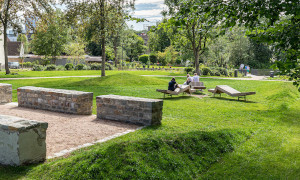By Hubertus von Dressler
The amendments to urban development and spatial planning law, the Environmental Impact Assessment Act, the Federal Nature Conservation Act and other legal bases passed in summer 2017 affect the daily work of planners in various areas.
The direct cause for a large part of the legislative amendments was the EU's EIA Amendment Directive 2014. The amendments were intensively accompanied by committed members of the bdla and other associations in order to achieve effective and practicable regulations in the sense of improved environmental precaution and sustainable spatial development. As early as May 2017, an interested expert audience received a first-hand "update" at the conference in Potsdam jointly organised by the Federal Ministry for the Environment and bdla. Once the legal amendments have been passed, the aim will be to open up their practical consequences for planning in specialist conferences or to discuss them in specialist talks in a collegial exchange of experience.
The new laws are now available. In some cases, political decisions made at the last minute, such as the insertion of a new § 13b in the Building Code, turn the objectives actually announced with the respective amendment and also the work done in advance upside down. Whereas the EIA Amendment Directive introduces the "area" as a new protected good into the law against the background of a continuing high level of land consumption, Section 13b enables an accelerated procedure for building on out-of-town sites without an environmental assessment.
The overall manageable adjustments and innovations show, particularly in the case of the Nature Conservation Act, that the approach does not achieve what would correspond to the necessary need for action in view of current environmental developments. While decision-makers, authorities, courts, environmental associations, experts and parts of the public are concentrating on a few hundred "planning-relevant" species (and increasingly blocking themselves with them), up to 80 he insect biomass is disappearing almost unnoticed compared to 1989. Agricultural monocultures are shaping whole swathes of land. The loss of landscape qualities has reached a scale that is not only threatening for species. The future of rural areas has long since become a socially relevant key question, the answer to which must also include a conscious approach to landscapes that makes open and creative use of the potential for spatial and cultural diversity and uniqueness. Landscape architects must and can make their contribution to this, even if at present the everyday work of landscape planners is predominantly determined by planning law requirements.
The challenges of rural areas are contrasted by the pressure on urban regions, which requires new planning strategies to safeguard open space and its functions. One approach could be to think of cities from their edges and give these transitional areas design quality. Further recommendations for action are brought together in the White Paper on Urban Green Spaces. On a broad scale, however, it remains a major task to implement these in an integrated urban development with those responsible for planning, land owners, politics and a broad public.
Keeping up to date with legal and professional developments, as well as a spirit of experimentation and imagination in the design of sustainable spatial development - challenging tasks for landscape architects!
Author: Prof. Hubertus von Dressler, Landscape Planning, Landscape Management, Osnabrück University of Applied Sciences, Faculty of Agricultural Sciences and Landscape Architecture.
- Latitude: 0
- Longitude: 0


